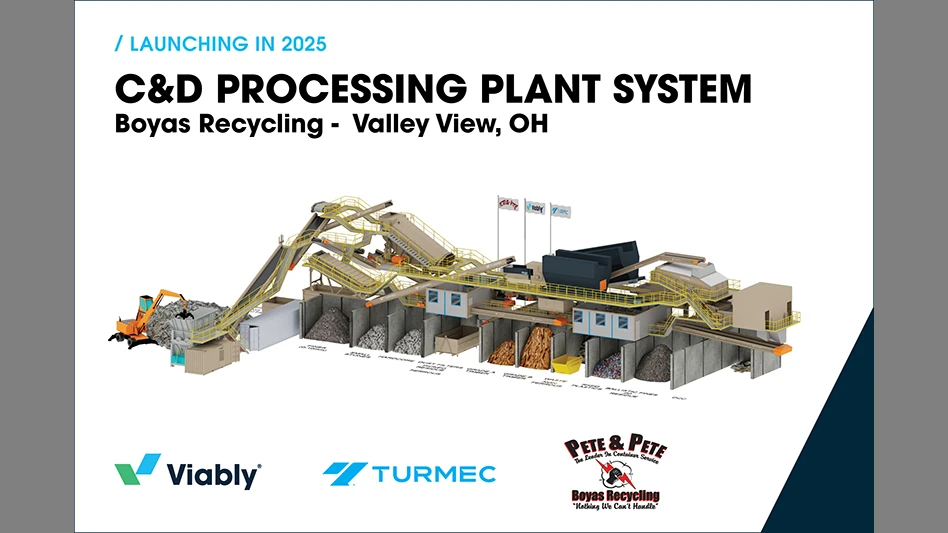
Workplace signage is important, but what about the labeling on the equipment itself? How do these labels factor into worker safety, and how do they differ from safety messages in the workplace?
I had never considered the specifics behind equipment labeling and its importance in the safe operation of machinery. Feeling like I was a little in over my head, I decided to consult an expert.
Angela Lambert is head of standards compliance at Clarion Safety Systems, Milford, Pennsylvania. Clarion is a component member company of the Milwaukee-based Association of Equipment Manufacturers (AEM). She has more than 15 years of experience in the field of warnings and liability and is actively involved at the leadership level in the American National Standards Institute (ANSI) and the International Organization for Standardization (ISO) for product safety and visual safety communication. She also is chair of ANSI Z535.1, the standard that focuses on colors used in visual safety communication.
Lambert is a delegate representative to ANSI for the ISO/TC 145 SC2 WG 1 Committee, a group responsible for the library of ISO 7010 registered symbols and the ISO 3864 set of standards.
Finally, she serves as the liaison for ISO/TC 145 to ISO/TC 283, acting as a bridge between the international safety label/sign standards and workplace health/safety standards.
Lambert explains the important processes used in creating effective equipment safety labeling.
By following industry consensus standards that define today’s best practices in visual safety communication … manufacturers can improve product safety and reduce liability exposure.
On product liability, risk and equipment safety labels
Effective warning labels are critical in industries where the interaction between people and machinery is frequent and creates greater potential for injuries. With the overall goal to prevent injuries and save lives, manufacturers have a legal duty to warn—they must give people the information needed to avoid potential hazards throughout their products’ expected life (e.g., through transportation, installation, testing, operation, shut down, inspection, maintenance, final decommissioning and disposal). Warnings and instructions can decrease liability exposure, and in that way, labels are an important part of risk communication.
By following industry consensus standards that define today’s best practices in visual safety communication—ANSI Z535.4 and ISO 3864-2—manufacturers can improve product safety and reduce liability exposure.
Generally speaking, a warning label should contain convey key information: identify the hazard, indicate the severity level of the hazard, indicate the likelihood of the hazard resulting in harm, give instructions on how to avoid the hazard and describe what will happen if the warning is not heeded.
When it comes to documentation needed in preventing liability, three key aspects are:
- a documented risk assessment;
- product safety labels; and
- product manuals and instructions.
These areas are interconnected and support one another.
Risk assessment is fundamental when it comes to machine and product design as well as safety. Engineers cannot design out a risk or safeguard a hazard unless they first assess the situation. A thorough risk assessment will identify potential risks and control actions to protect those who interact with the product during its life cycle. Warning systems are an outcome of the risk assessment process. Intelligent decisions need to be made about how to warn effectively so people can take the steps necessary to avoid harm.
Effective strategies for warnings and instructions

There are several strategies for employing warnings and instructions, such as using a quality risk-assessment process (the foundation of a strong safety program and of a company’s labels and warnings) that is performed routinely, following the latest versions of the ANSI and ISO standards for labels and warnings and continuously reevaluating equipment safety programs in line with equipment and standards updates.
Even though equipment safety labeling might seem straightforward to most people, the processes behind the wording, design and risk communication often are multilayered and complex. Safety professionals have dedicated themselves to establishing standards to ensure safety labeling goes through a documented process that is clear and consistent.
Employers and workers should always make sure they are aware of these standards, that they are trained properly to understand the safety messages behind them and that risk assessment programs are updated continually.
Businesses can ensure a safe workplace when leaders and employees make a personal commitment to championing a culture of safety. When goals are established, training is developed and the goals are measured and truly owned by everyone working together, the company will be well-positioned to improve safety across the organization.

Explore the July 2022 Issue
Check out more from this issue and find your next story to read.
Latest from Recycling Today
- Radius to be acquired by Toyota subsidiary
- Algoma EAF to start in April
- Erema sees strong demand for high-volume PET systems
- Eastman Tritan product used in cosmetics packaging
- Canada initiates WTO dispute complaint regarding US steel, aluminum duties
- Indianapolis awards solid waste contract, updates recycling drop-off program
- Novelis produces first aluminum coil made fully from recycled end-of-life automotive scrap
- GPR’s hubbIT platform recognized in Georgia State University’s Marketing Awards for Excellence in Innovation





